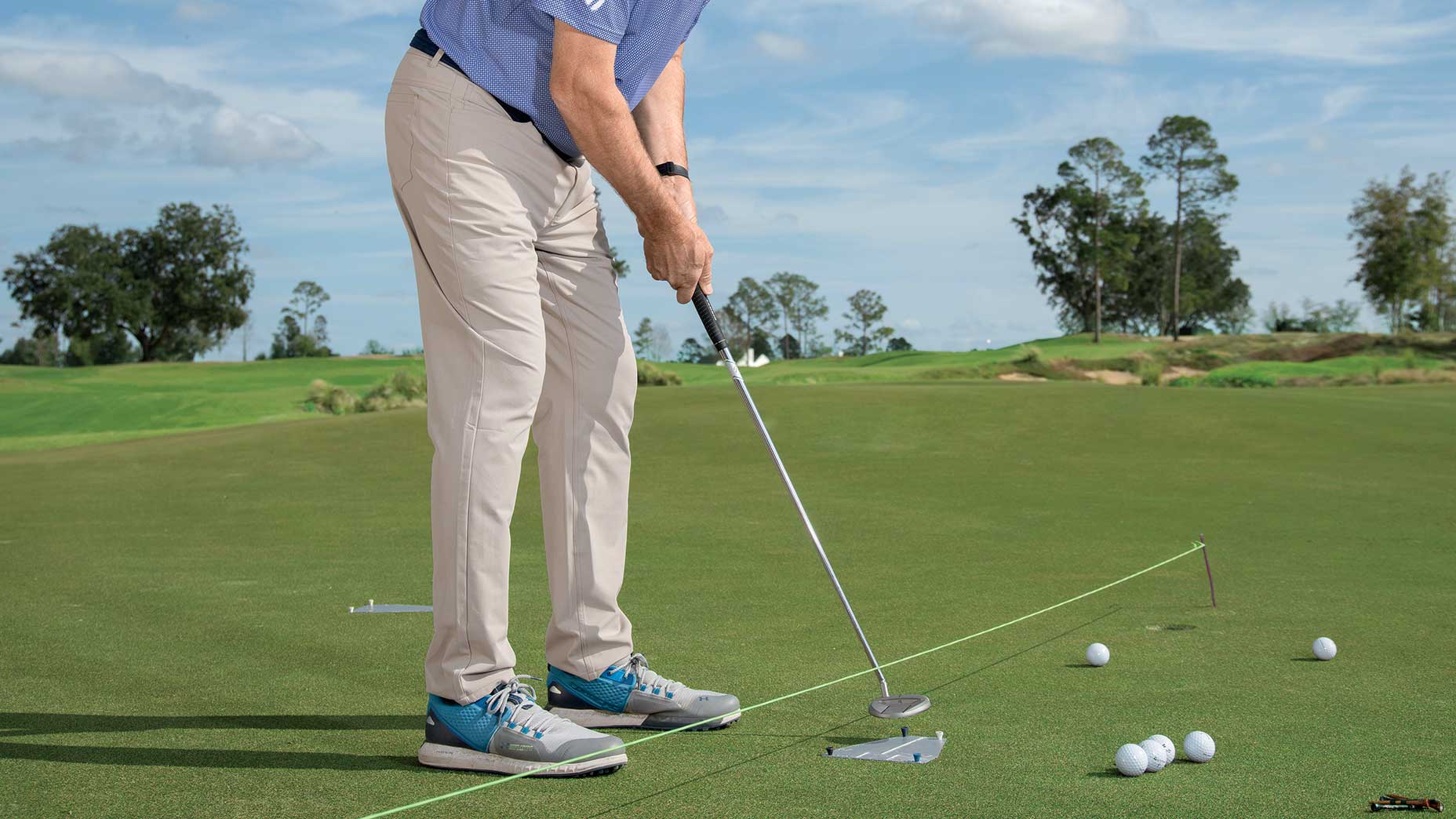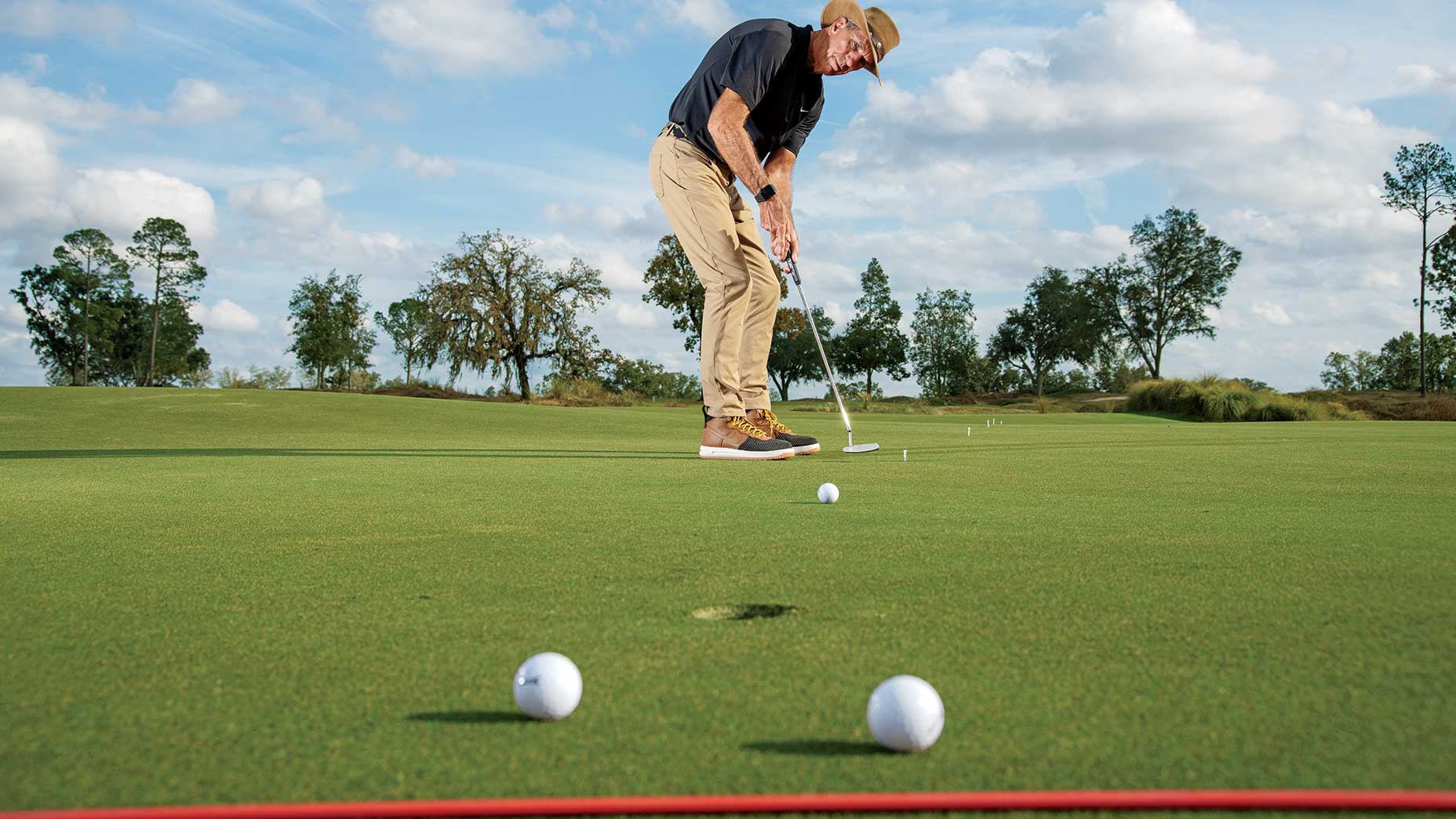 1 easy way to instantly make more putts | 5 key tips for 2026
1 easy way to instantly make more putts | 5 key tips for 2026
Here’s how you should approach those long lag putts
Most golfers never know how much break to play on long putts—they tend to focus too much on the line and not enough on the area around it. To flip the script, determine the correct roll on, say, a 20-footer, then re-create the track by placing balls at three-foot increments, start to finish. With the roll re-recreated and highly visible, you can see how the ball typically reacts depending on where it is in its journey to the cup.
Notice in the photo below how (1) the first section of this putt features a slight right-to-left curve, but nothing too severe, because the ball is moving at its fastest. Section (2) is where pace begins to slow, so the ball becomes more susceptible to gravity and the right-to-left slope. Near the cup (3) is where things tend to straighten out—the big breaking section (2) is almost always followed by a flat spot (otherwise the hole placement could be illegal).
Putt the ball closest to the cup into the hole, then work backward. Play less break when you’re close, the most break when you’re in the middle, and much less when you’re farthest from the hole. You’ll sync your brain and your eyes while gaining a deeper understanding of how subtle slopes in the green affect each leg of your putt. That’s when real learning takes shape.
ADVERTISEMENT
ADVERTISEMENT





